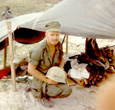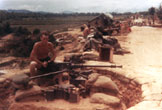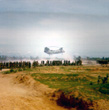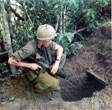[Home][Table
of Contents][What's
New][Picture
Gallery][USMC Picture
Pages ][FMFCorpsmen
][Combat Wives][Combat
Histories][Memorials][Poems,
Memoirs][Links][Guestbook]
Road of 10,000 Pains: The Destruction of the 2nd NVA Division by the Marines, 1967
By Otto J. Lehrack
Published by Zenith Press (www.zenithpress.com)
(click image to enlarge)
(Book cover Courtesy of John Wurm, Zenith Press Marketing Manager – Military/History)My new book, Road of 10,000 Pains: The Destruction of the 2nd NVA Division by the Marines, 1967 will be available in April. It covers the operations in the Que Son Valley from April to November 1967 and operations Union I, Union II, Cochise, Adair, Swift and Essex. This has been an on and off project of mine for about six years. During this time I have lived in three states and two foreign countries and have lost the contact data for some of the Marines and Corpsmen that I interviewed.
If you wish to order them from me, I will autograph and send them to you for $25 each. This includes the cost to me, including shipping from the press, the discount price of the book, the padded envelope and the cost of shipping to you. I will send you as many copies as you would like. I would like to get as many of them done at one time as a convenience to me so try to order as many as you need all at once. If you cannot do so, I will accommodate late orders into the foreseeable future.
Here is an excerpt from the book from Operation Swift:
“The NVA came at Murray’s men in a whirlwind of violence—hard on the heels of mortars that mushroomed across the knoll throwing hot, sharp steel in every direction; within the lanes marked by the tracers of Soviet-made machine guns and small arms that chain-sawed every bush, sapling and blade of grass to stubble; the NVA soldiers came by the score, in platoon formation, firing from the hip; they came in squads, firing and maneuvering their three man fire teams; they came singly, men orphaned by the Marines’ return fire but still on their feet and attacking; they came at the Marines in a flood, like water from a burst dam, flowing around the strong positions, threatening to carry away the weak and then trying to come together on the far side; attempting to isolate and surround small clumps of resistance. They nearly succeeded. Had it not been for the outstanding courage of the individual Marine and their close air support, the entire company would most likely have been butchered on the knoll.”
Semper fi,
Otto Lehrack
ottolehrack@hotmail.com***************
PRESS RELEASE: Courtesy of John Wurm, Zenith Press Marketing Manager – Military/History
To look at the lush expanse of Vietnam’s Que Son Valley today, it is hard to imagine a time when peaceful prosperity didn’t envelop the region. Covering 273 square miles, the populous, rice-rich valley serves as an agricultural center for a now thriving nation. Over four decades prior, however, the area known as “The Valley,” would serve as host to one of the bloodiest series of battles in modern military history.
Overshadowed at the time, and in the decades to follow, by the iconic battles that took place at Khe Sahn, Hue City, and Saigon in the early months of the Tet Offensive, the bloody back-and-forth engagements taking place in the Que Son Valley from April-November 1967 would prove to be some of the heaviest and costliest of the entire war. On one side was the 2nd NVA Division, a group of largely veteran soldiers hardened by years of ferocious combat. On the other, the 1st Marine Division, the Old Breed, heir to the most glorious history in the entire U.S. Marine Corps
Now, for the first time, the Que Son Valley campaign is covered in comprehensive and uncompromising fashion. Road of 10,000 Pains, which takes its title from a translation of The Iliad, is itself an epic oral history of war. The battles fought within four miles of Route 534 in Vietnam over seven months in 1967 are described in dramatic interviews with more than ninety U.S. Marines who were there. The action in the Que Son Valley was so intense that many of the men on the ground were unaware of the nearby route that connected these events until now.
Working from official histories, American and Vietnamese, and from interviews with over 150 Marines, corpsmen and North Vietnamese Army soldiers, author Otto Lehrack has compiled a riveting account of men at war.
The heroic struggles of those who risked so much at the Que Son Valley were destined to be lost on the scrap heap of history, but thankfully, Road of 10,000 Pains makes up for lost time by finally honoring these men. Here, finally, is the authoritative account of the sacrifices, hardships, triumphs, and pains of their epic mission in The Valley.
ABOUT THE AUTHOR: Otto J. Lehrack is a retired Marine, two-tour Vietnam veteran, and the author of three books and many articles. He served 24 years in active service as both an officer and enlisted Marine. He served as commanding officer of India Company, 3rd Battalion, 3rd Marines in his first tour in Vietnam and as Operations Officer of the 1st Radio Battalion on his second tour. Lehrack has also taught world history, Russian history and writing at the university level, been an executive with a Hawaiian sugar plantation and the COO of a small computer hardware company in Silicon Valley. Two of his books were Military Book Club main selections, and one of them won the Greene Prize awarded by the Marine Corps Heritage Foundation. He currently lives in Flushing, New York.
************************************
COMMENTS and REVIEWS
Road of 10,000 Pains: The Destruction of the 2nd NVA Division by the Marines, 1967
By Otto J. Lehrack(click images below to enlarge)
***********************************************************************
(Submitted by Ryan Hooley, Dec. 15, 2010)
"The Road of 10,000 Pains"
I have read it through twice now. I went to Nam at the start of the operation Union I, and received my 3rd heart, Nov 8th. on Essex. Most grunts knew nothing about the big picture and our mission, only that the gooks were building up for Tet. Hell, most of the time we had no idea where we were until we passed the same place a few days later. The book enlightened me about what was transpiring incountry and with other Companies around us. Makes sense 43 years later. I know that each of us had different experiences even though we were together in the same fight. Sometimes the book just did not do justice to what had occurred. It is close enough to bring back memories. In my eyes, every guy there deserved a medal. I have never met a Marine who has not run under fire to help a fellow grunt. I knew we were in some bad stuff, but figured every grunt in Nam had the same happening to them. Then to find that we lost more guys then anyone, Whew. I read how many guys were KIA in each fight, it seemed to me, that we lost a lot more than what was stated. It seemed that everyone on Swift was wounded. Probably just my imagination. Anyway, it brought tears to my eyes.~Ryan Hooley, M Co. 3/5
*****************************************************
(Submitted by Frank Jurney, Apr. 27, 2010)
I recently read Otto's book "Road of 10,000 Pains." I have waited a few days to let it soak in -the struggles, complexities, intensities and memories of our situation are well described by Otto.
The Marines that served in the Que Son got a full dose of the war-the reconnection given to the individual Marine is well-documented . Putting together all the pieces in an outline form -the history-the campaign-the units -the enemy-the individuals--the results were well-depicted in great depth. We who served in the Que Son in 1967 now can understand the overall scope of the operation.There is much praise for the individuals and the small units that conducted these battles. Their history is now documented and will be placed with the archives of the 5th Marines.
I would also like to praise the leaders I was blessed to have served with -Captain "Judge" McElroy and Captain JD Murray, without their dedication, training and great leadership, our situation could have been much worse. Thank you for your outstanding leadership and guidance. Thanks Otto for a wonderful job of putting all the pieces together -great job -great book.
I also would like to make a point that helped me to cope and understand the Vietnam War. The article was written by Jack Smith, son of Howard K. Smith -TV anchor. Jack was with the Army and was wounded during the Ia Drang Valley fight, 93% casualties. Jack, as many warriors, had trouble understanding the war -twenty years ago Jack wrote the following, "I watched the Berlin Wall come down and as an ABC News correspondent, I witnessed first hand the collapse of Communism. I remember thinking, 'My God, containment worked.' We won the Cold War. However meaningless Vietnam seemed, it contributed to the fall of Communism."
Semper fi
Frank Jurney
Mike 3/5
Nov 66/Dec 67**************************
(Submitted by Debbe Reynolds, Apr. 26, 2010)
"The Book"
The true merit of any writing is the impact it has on those who read it. In the few weeks since Otto's book on the Que Son battles was published, I've been privileged to see and hear first hand how Marines who fought those battles are reacting to the book. Gordy Seablom who served in M Co. 3/5 with my husband, Brad Reynolds, visited us and they spent the whole weekend passing Otto's book back and forth, reading paragraphs out loud, stopping to tell "the rest of story" and many more incidents that the book brought to their memory. We've had long, lively phone talks with JR McElroy, Jr., Jack Swan, Howard Haney, JD Murray, and many more Marines all over the country about their reactions, many blown away by the amount of research done, but mostly praise for Otto's work despite some parts they thought needed more clarification.
When I read the "The Book," I had a hard time controlling my emotions, and tears at times, For 30 years, Brad has told me of the Marines he served with, and the battles they fought, but little or nothing has been published that really tells the strategic importance of what the Marines accomplished in the Que Son Valley in 1967. I didn't realize just how many USMC battalions were involved in these operations, and the staggering losses to individual companies.
I am honored and proud to know some of the Marines and Corpsmen who shared their memories with Otto, and many more who survived those battles and could probably fill a whole other volume with their remembrances. I believe that Otto has done a great service honoring these warriors and their fallen friends, not only by his tremendous research, but by making their combat history come "alive" to the reader. I know he spent a lot of time with the Marines he interviewed, going to reunions all over the country to listen and learn, even going to Vietnam with Marines who showed him where they were during the battles, reliving it all 40 years later.
I also know that Otto's book will have a huge impact on families and friends of these Marines. When I emailed info about it to my niece, Anita, this is what she wrote:
Hey Auntie Debbe and Uncle Brad, What I know about Vietnam is very scary to me, and I don’t know much, but I just wanted to say Thank you Uncle Brad for fighting for our country and for fighting for us! I love you and today I just wanted to let you know that and give you the honor that you deserve! Awesome, awesome, awesome! Congratulations to Otto for competing his book!Thank you, Otto, for this labor of love,
Debbe Reynolds, USMC Combat Wife**************************
(Submitted by Steve Lovejoy, Apr. 18, 2010)
Steve Lovejoy, 1967
(picture courtesy of Steve Lovejoy)Just finished Otto's book, Road of ten Thousand Pains. This book is one of, if not the most complete battle histories of the action that took place in the Que Son Valley, Vietnam in 1967. There hopefully, are others to follow. I found the individual accounts that were inter-dispersed with historical information very helpful in understanding just who was involved. From the overall unit actions to the individual Marines comments, I was able to finally follow just who was involved in the various operations that took place in the Que Son Valley. As an individual rifleman and even radio operator, it was difficult if not impossible to be aware of any happenings on the battlefield other than what was taking place inside of a very small perimeter of one's own actions. I do hope that more information may be obtained for future publication of other books about the '67 Que Son campaign. Since I was a member of 2nd platoon Mike Co. for my entire time in in the field, I am aware of numerous M Co. 2nd platoon accounts that need to be told that will only add to a more complete understanding of what did occur on the battlefield. Of course there are many other Marines that can offer valuable info if they can be made aware of the need for their witness and desire to participate. Thanks Otto for a work well done!
Semper Fi,
Steve Lovejoy
M Co Feb 67-Mar 68**************************
(Submitted by JD Murray, Apr. 16, 2010)
Lift off of M Co. 3/5 at Hill 63 into SWIFT, Sept. 4, 1967
(picture courtesy of JD Murray)Otto Lehrack's new book is a very well-written book outlining the military scenerio of the 5th Marines venture into the Queson Valley in 1967. He has highlighted the major battles fought in southern I Corps while the media was focused on the hill fights in the DMZ and the fight for Khe Sanh. At last, the world will gain a new perspective on the Marines and Corpsman of the First Marine Division during Vietnam.
Like any book that tries to cover the multiple skirmishes, frequent firefights and the major battles, many units and individuals are lost because no one has spoken about their events, even though they have played a role in the overall action.
My only battle mentioned in the book was on SWIFT, and therefore I am unqualified to comment on the other battles outlined by Otto Lehrack. I would have liked the SWIFT portion of the book (the first day and night) to reflect how B and D Cos, K and 1/5 Command Group, and M Co fought individually as units separated by hundreds, if not thousands, of yards apart and each in its own world. The book reads as if we were all together and fighting as a unit. Unfortunately, we fought as isolated units with little interaction until the following day.
Otto has done a really great service for those of us who fought there in 1967.
JD Murray
CO, Co M 3/5********************************************
(Submitted by Fred Permenter, Apr. 7, 2010)
Fred Permenter, 1967
(picture courtesy of Fred Permenter)I started to read Otto's book Road of 10,000 Pains the other day, I gotta tell ya, I had to put it down a few times after the" Knoll" (Operation SWIFT) and compose myself. This Old Marine was quite shaken up with Memories. What a powerful and informative book. Now I know WHO, WHAT, WHEN and WHERE. I had no idea there was a NVA Division out there waiting for us. Only thing I knew, we were out there to help Delta 1/5 and then WE, ran into a Buzz-Saw of Lead on that" Little Knoll." Otto Lehrack really did his homework. Thank you Otto for putting our Company (Mike) into the History books.
Semper Fi,
L/Cpl Fred Permenter. Mike Co 3/5
May to Oct. 1967********************************************
(Submitted by Brad Reynolds, Mar. 19, 2010)
Brad Reynolds, 1967
(picture courtesy of Brad Reynolds)What a book!! I was a little skeptical when Otto talked to us (me and my wife, Debbe) about writing this book. We wondered what information he would use and how on earth would he make heads or tails out of what took place in the Que Son Valley. It begins with a little history starting back in 1964, leading up to the battles fought through spring and fall of 1967. The losses inflicted on the North Vietnamese Army by US Marines in those battles, I believe, was the most significant reason that DaNang was the only major city that was not overrun during the Tet Offensive of 1968.
Otto, did a remarkable job intermingling personal interviews with the objectives for the operations, who was where, and what was going on at the same time. We have all asked questions after a major battle, where were they, what were they hit by, what took them so long to get to us, plus many more. There is combat humor and tragedy throughout this book. Like who would crawl through enemy fire just to get a chew of Redman and donate a $100 dollars to a young Marine. (We know, do you?) Or, what outfit was the Marine in who stood up during a barrage of green and white tracers, and dropped his pants to see if his family jewels were shot off, etc...
It's a good read for the history buffs of the Vietnam war, along with being a good source of information for family members and friends who want to understand what was happening to the young men of that era who so bravely fought and died in the battle for the Que Son Valley, and how these battles brought about the destruction of the 2nd NVA Division. Without the heroic sacrifices of all these Marines and Corpsmen, Tet ‘68 would have been a whole different story that would have had repercussions for years to come.
All I can say is the book is well done. It brought back a lot of memories, and put faces to the stories I heard when I first got to Mike Co 3/5 in Sept. 1967. I could go on and on, but I’m not. Just get the book!
L/Cpl. Brad Reynolds, USMC/ Ret.
M Co. 3/5
Sept. '67-June '68Good job, Otto!
********************************************
[Home][Table of Contents][What's New][Picture Gallery][USMC Picture Pages ][FMFCorpsmen
][Combat Wives][Combat Histories][Memorials][Poems, Memoirs][Links][Guestbook]






